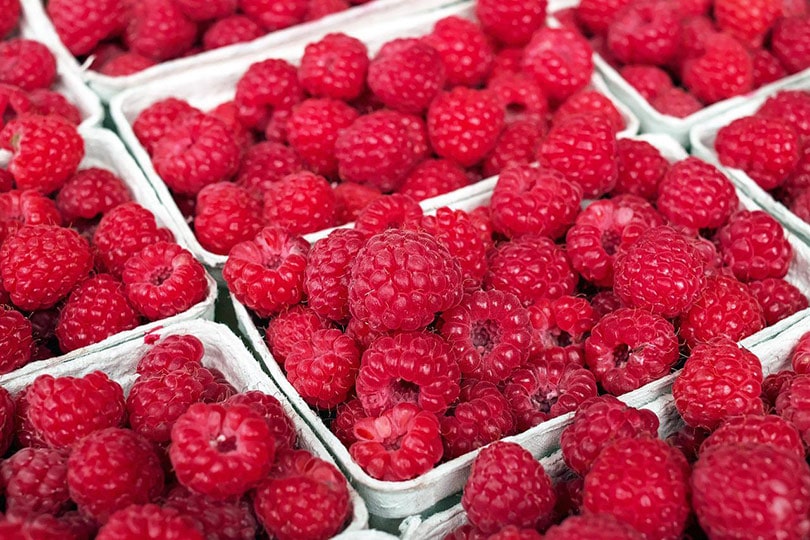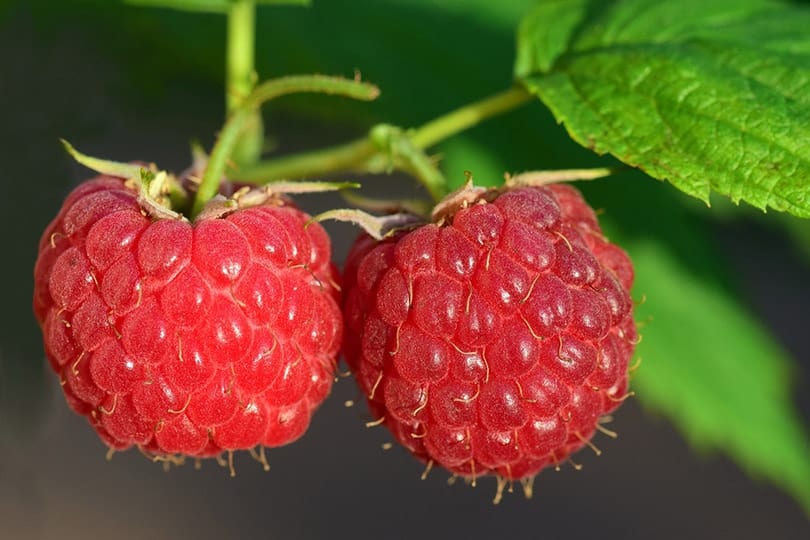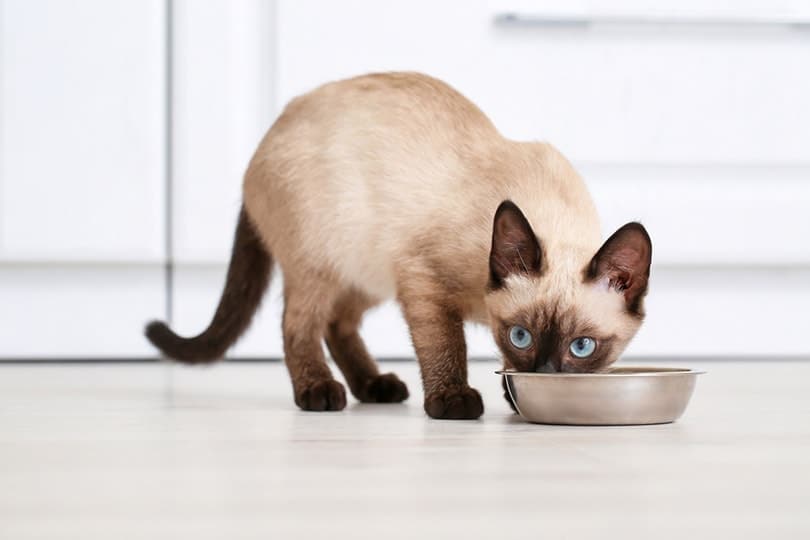If your cat needs to shed a few pounds, part of their diet plan might include cutting back on treats or looking for lower-calorie alternatives to commercial kitty snacks. We know that fruits, such as raspberries, are healthy choices for humans but what about cats? Can cats eat raspberries?
Yes, raspberries are a safe food for cats in moderation, but whether your cat will enjoy eating them is a different story. Raspberries are a healthy food, but their benefits are limited in cats, for reasons we will discuss in this article. We’ll also give you some other safe fruits to offer your cat if raspberries aren’t quite their cup of tea.

Wait, Cats Can Eat Fruit?
If you’re surprised that cats can eat fruit, it’s probably because you’ve heard that cats are carnivores and shouldn’t eat carbohydrates or plant-based foods. It’s true; cats are what are known as obligate carnivores, or true carnivores, meaning they need to get their nutrients from meat sources.
So, while cats can eat fruits like raspberries, they aren’t a natural part of their diet, especially in large quantities. In the wild, cats would likely only encounter these foods in the stomachs of prey animals they consumed.

Health Benefits of Raspberries
Raspberries, and other berries, are high in fiber and antioxidants, both beneficial nutrients for cats.
Antioxidants can help reduce chronic inflammation and are commonly used in pets with arthritis or allergies. Fiber helps cats maintain their digestive health, although there’s some question whether plant sources of fiber are useful to them.
In addition, raspberries are a good source of vitamins including vitamins A, C, E, and K. Vitamin C and E both function as antioxidants and benefit immune health. Vitamin A is an essential nutrient for cats, playing a role in skin, coat, nerve, and muscle health. Vitamin K is an important component of the blood clotting process in cats.
While raspberries do contain plenty of nutrients that are healthy to cats, there is a catch: a cat’s digestive system isn’t meant to digest large quantities of plant foods.
So, while raspberries aren’t toxic for cats, they also can’t digest them very well and should only eat small amounts at a time. Because of this, your cat probably won’t be able to eat enough raspberries to get any health benefit from them.
Do Cats Like Raspberries?
Predicting a cat’s likes and dislikes is never an easy task and their taste for raspberries is no different. However, science has given us some insight into a cat’s sense of taste that may help.
Research has found that cats are unable to taste sweet flavors, which are the major appeal of fruit, at least to humans. They can taste sour foods, however, and raspberries often fall into this category, depending on the season. Generally, cats tend to avoid sour flavors, meaning even if they can taste raspberries, they may not like the flavor.

How to Feed Raspberries to Your Cat
Raspberries, and any other treat that’s not your cat’s regular diet, should only make up 5%-10% of your cat’s daily calories. Your veterinarian can help you determine what your cat’s target calorie intake should be, as it will vary based on their age, activity level, and starting weight.
To safely feed your cat raspberries, make sure you wash the fruit thoroughly first, just as you would before eating them yourself. Cats don’t chew their food well when they eat, so you’ll want to cut the raspberries into small pieces that aren’t a choking hazard.
If your cat is having trouble digesting the raspberries, you may notice signs such as diarrhea, vomiting, or constipation. In this case, you’ll want to look for other treat options for your cat.

Other Safe Foods for Your Cat
If your cat doesn’t like raspberries or is having trouble digesting them, you could try offering different fruits including:
Cats shouldn’t eat the pits, seeds, skin, or rinds of any fruit. Don’t offer your cat grapes, raisins, or citrus fruits as they are all toxic in various ways.

Sometimes, your cat may not tolerate fruit at all. If you still need a low-calorie snack option, these vegetables are safe options:
- Green beans
- Broccoli
- Cauliflower
Both fresh and frozen fruits and vegetables are safe for cats. Canned options should usually be avoided because they often contain added salt and sugar.
Conclusion
While raspberries are generally safe for cats, it’s always a good policy to check with your veterinarian before offering any new food to your kitty. Some cats may have health issues, like diabetes, that make eating high sugar foods, such as fruit, a bad idea. Feeding your cat treats can be helpful for training but many of us just like to offer them because we love our cats. Just remember that the bulk of your cat’s calories should come from a nutritionally balanced diet. Keep the treats to a minimum to help your cat stay at a healthy weight.












